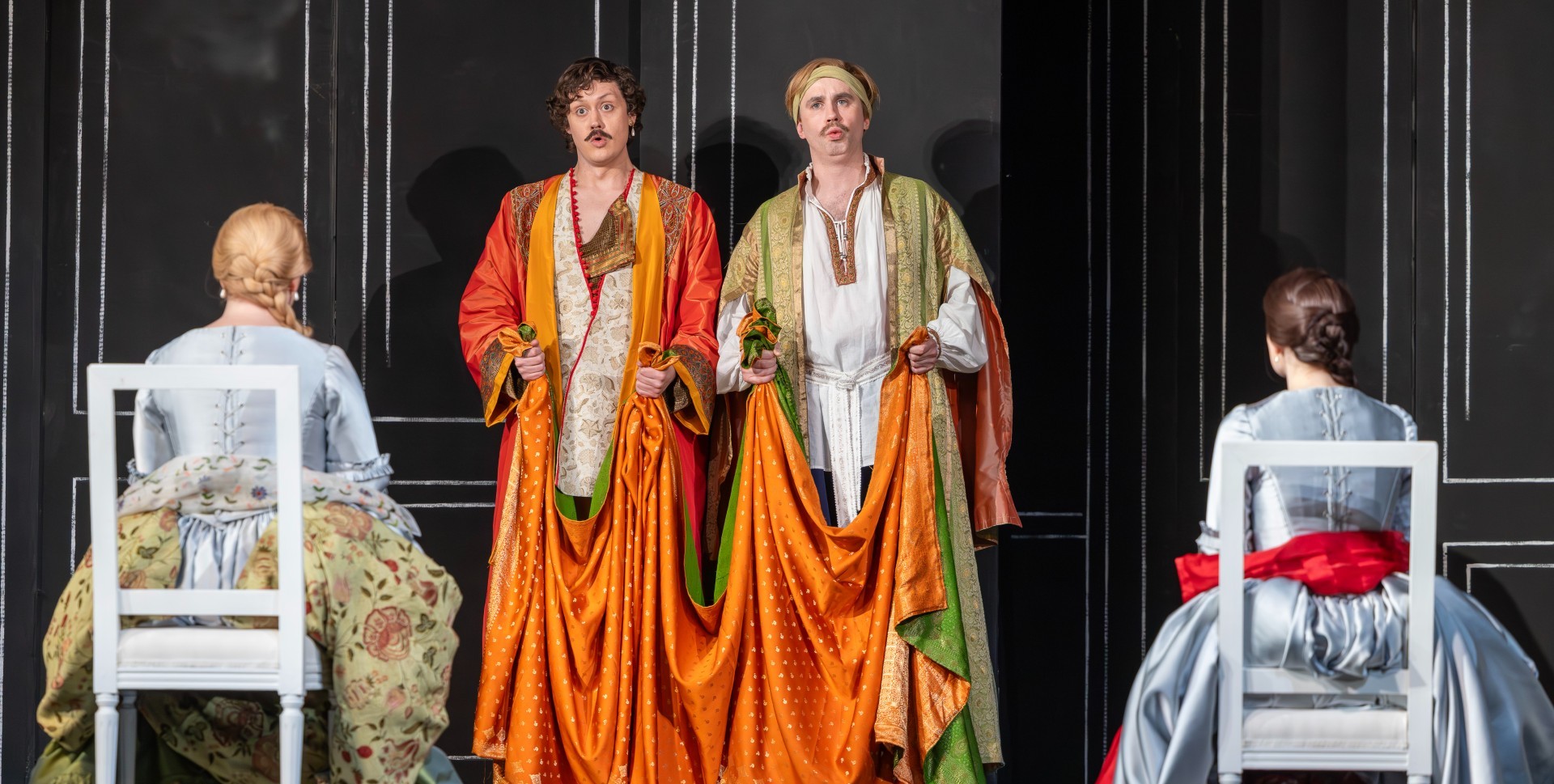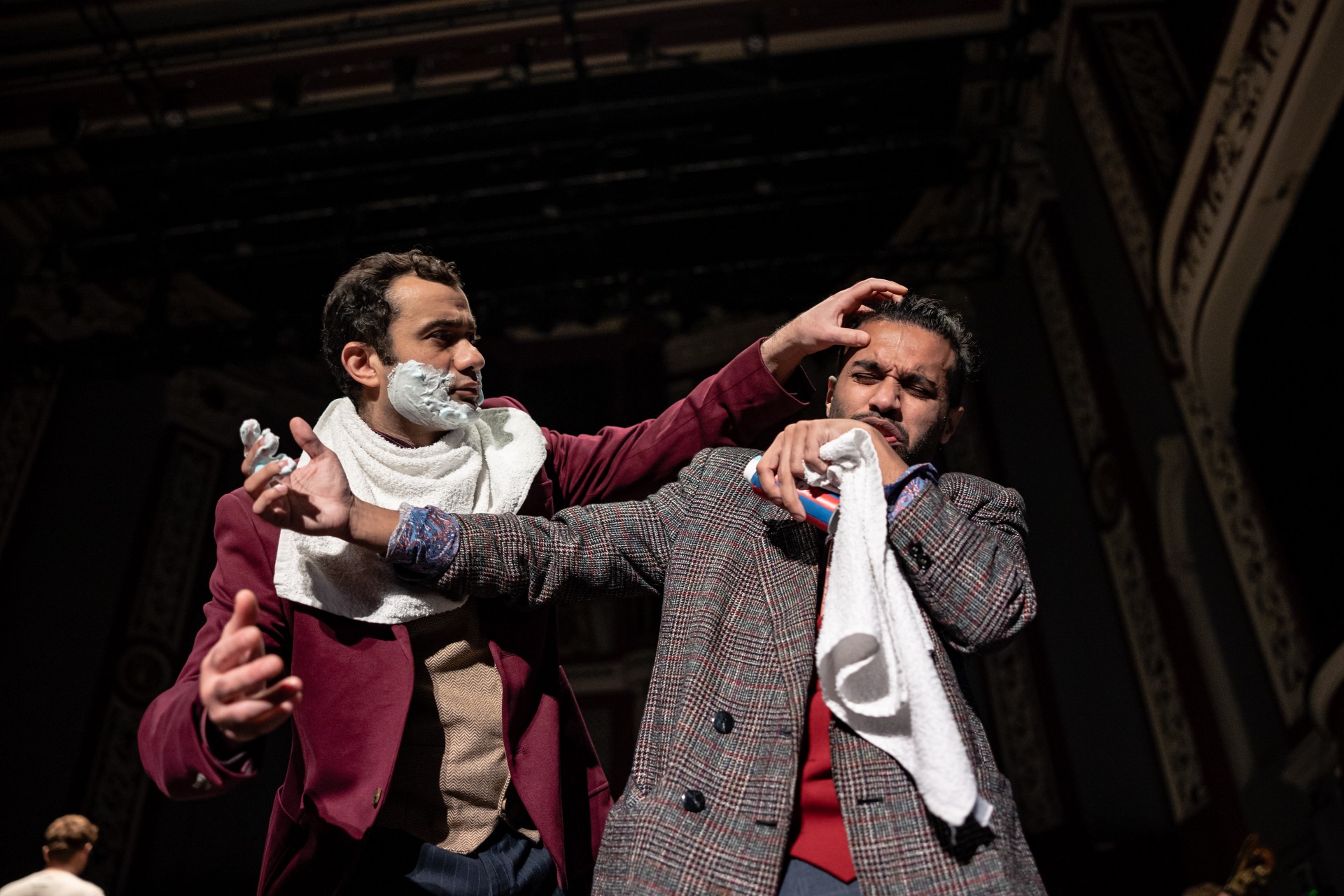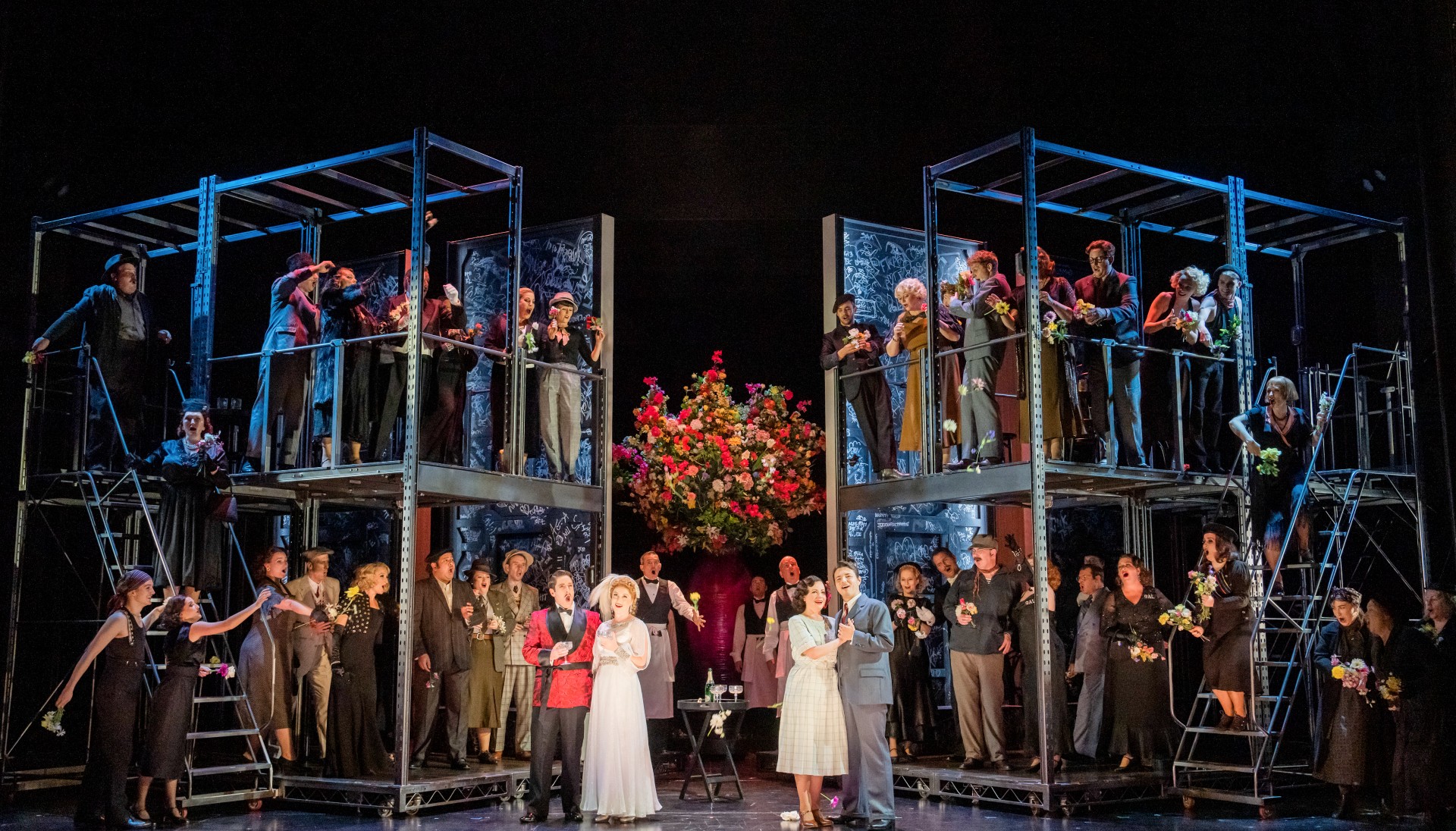I have known and loved Mozart’s Requiem for over 50 years, the last and, intriguingly, unfinished work by one of music’s unequivocal geniuses.
I have sung in it. I have listened to dozens of performances and recordings, from church settings to concert hall, chamber choirs to major choral societies, organ accompaniment to full classical orchestra, modern to period instruments, child trebles to operatic sopranos. Despite the familiarity, I am never quite ready for its first melodic material, the bassoon’s coming in on only the second beat of the very first bar. There is a similar effect with the basset horn cum clarinet entry on the second beat of the bar after – two disquieting opening communions with a departed soul for whom the chorus are about to beg eternal rest. It’s magical … and, after breaking into a smile, I am always all ears thereafter.

Yasmina Patel, Shawn Willis (back), Rian Jansen, Carina Howard, Aaron Chaplin, Hannah McGlashon, Vuyelwa Phota and Emile Petersen with the Chorus of Opera North
Now, thanks to Dane Hurst, South African-born Artistic Director of Leeds-based Phoenix Dance Company, I am here all eyes as well:
“A 2020 proposal to stage Mozart’s Requiem … was a necessity due to the enormity of what had happened during the pandemic – the sense of panic, the dread of not knowing who was going to be taken next … “
Each of the Requiem‘s movements is given a sympathetic dance enactment of its textural and musical source with some stunning results. Vocal soloists – soprano Ellie Laugharne, contralto Ann Taylor, tenor Mongezi Mosoaka and bass Simon Shibambu – as well as the Opera North Chorus, without a vocal score in sight, interact with the dance troupe, an integral part of the night’s expressive interpretation. This is not merely a display of uniform grief and sadness. There is anger and despair, panic and repose.

Soprano soloist Ellie Laugharne and Yasmina Patel from Phoenix Dance Theatre
On the musical side, soloists and chorus are on top form. Simon Shibambu is the vocal match of any trombone in the Tuba Mirum, the chorus almost brutal in the foretelling of the Day of Judgement in the Dies Irae.
From the dancers, there is some beautiful and energetic ensemble choreography and a graphic, anguished solo in the famous Lachrymosa.

Elements of Dane Hurst’s South African roots are evident throughout and it was a natural development to look there for a companion work to follow the Mozart …
“From the beginning, the idea for the Requiem was to create a work that honours the legacy of those who have passed … After Tears is about those of us who are left behind … something uplifting, something celebratory, something connected to South African culture … It made sense to create this with the Jazzart dancers, and it made sense to Opera North to bring in a South African composer to write the music.”

Soweto-born Neo Muyanga was commissioned to write the piece and the narrative is based on a post-Mandela disillusionment, yet abiding optimism about the country’s future:
“We must give thanks to and mourn the loss of the ancestors who fought for freedom, and we also have to mourn the loss of the utopian future they tried to create … because that dream has not been realised. We cannot hold on to the past, we must let it go and work together, get our hands dirty , and build something new, because if we hold on too tightly to the past, we cannot move freely into the future.”
Of its three movements, the first offers resilience amidst confusion and despondency, the second is a moment for ceremonial ritual, with recorded tribal rites, giving thanks to the dead, with the third a telling portrayal of working towards a brighter future. As Dane Hurst explains:

“In South Africa, dance is part of every honouring, every event, whether it’s happy or sad. Certain sections are truly inspired by the South African dancers’ natural way of moving, and I’ve brought all of that together with the full team.”
Conductor Gary Walker and the orchestra, particularly the percussion section, relished the challenge of the new piece, cross-rhythms and syncopated twists abounding, but the focus remained steadfastly towards the triumphal closing section.
The work builds inexorably in energy towards a joyful, intoxicating conclusion; the music, as with the dancers, leaps before us, a gripping, absorbing spectacle, brimming with timeless emotions to which we can all relate, a sudden silence as arresting dramatically as any fortissimo marking.

These dance realisations of two very different Requiems, separated, culturally, not only vastly in time and social constructs, but by opposite geographical hemispheres, are beguilingly life-affirming and spiritually uplifting.
Such Fusion projects as these ON/dance productions seem an obvious ingredient in the mix to secure a lively and enthusiastic future of the Arts. The audience profile here was very different from that of the Bizet production the week before, diverse in age and background.
Sung in Latin (with a little Greek), English and Sesotho, with English titles.
In association with Phoenix Dance Theatre, Jazzart Dance Theatre and Cape Town Opera. Conductor Garry Walker; Director/ Choreographer Dane Hurst; Dramaturge/ Rehearsal Director Mbulelo Ndabeni; Set, Costume and Video Designer Joanna Parker; Lighting Designer Peter Mumford
Further performances at Leeds Grand Theatre
Tuesday 30 May, Thursday 01 June, Saturday 03 June, all at 7pm. Also Sunday 04 June at 2.30 p.m.
Requiem photography by Richard H Smith. Feature photograph
Rian Jansen, Carina Howard, Yasmina Patel, Aaron Chaplin, Emile Petersen, Hannah McGlashon and Abigail Overmeyer with the Chorus of Opera North
After Tears photography by Tristram Kenton.



